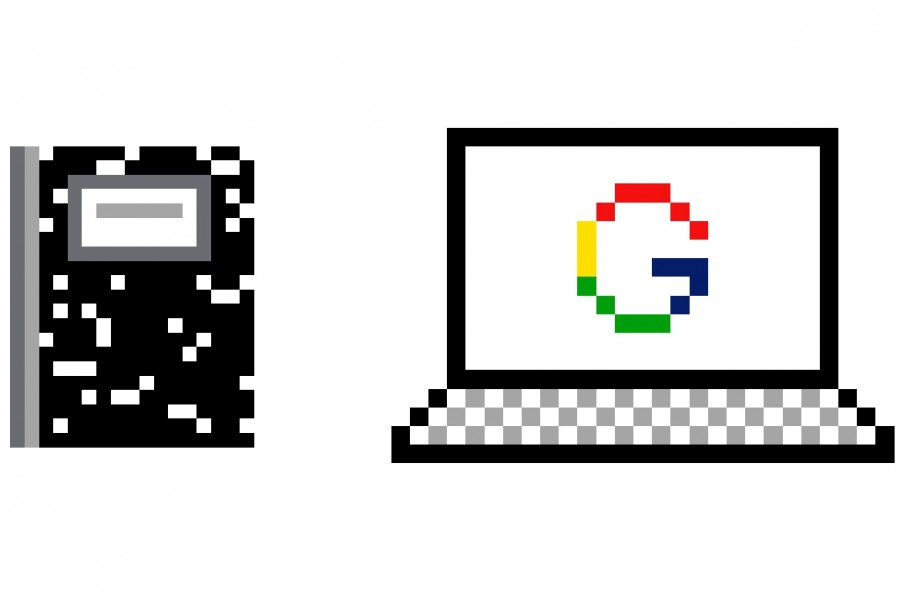Technology Changes in the Classroom
Two years ago, any device usage during class time was a rarity. But with the implementation of BYOD and cloud learning, students now spend almost their entire school day on devices, and are increasingly efficient and productive in their use of technology.
“Before we started using computers [more], the teachers didn’t really know how to regulate them, so a lot of people would mess around,” junior Derek Mark said. “Now they’ve gotten used to balancing paper textbooks along with computers so it’s not as much as a distraction issue as it was before.”
The digital learning revolution has fundamentally transformed the school’s education system, and the school continues to explore additional opportunities for collaboration and individualized learning.
“Even in the last 10 years, [what we did] was much more limited… because we had two or three classrooms with a computer,” English teacher Keren Dawson-Bowman said. “It’s such as radical transformation to be able to have a device for every student and have working Wi-Fi.”
One of the most significant changes has been the addition of Google Classroom, an integrated platform for creating, distributing and grading assignments.
“[Classroom is] a huge change in organization and access to materials,” English teacher Margaret Bennett said. “It helps kids be more organized, which helps them learn more effectively.”
Classroom also enables teachers to communicate efficiently and help students throughout their working process.
“It’s brought students and teachers closer [together] because they have an easy form of communication,” sophomore Alisha Mirapuri said. “You can always collaborate and ask your teacher questions even if you’re at home… it really helps the teachers and students work together in an easier environment.”
Not all teachers use the platform, but those who do use it in a variety of different ways.
“[Classroom is] more convenient and better for communicating,” science teacher Greg Stoehr said. “Students have easy access to resources. I collect work digitally which is great as opposed to paperwork, and it’s streamlined a lot of assignments and enhanced them.”
In addition to Classroom, the school has added the BYOD program, updated its Wi-Fi and assigned each student a school email.
“Before BYOD and Google Classroom, things were the way they were,” Assistant Principal Galen Rosenberg said. “Bringing in this technology compels some level of change. Teachers think [about] how to make it better for students and that kind of evolutionary change is easier with a device.”
However, there are downsides to incorporating technology into a classroom’s daily schedule.
“You have to be really deliberate about when you use technology and when it’s better to use paper,” Bennett said. “I really have to think about everything that I’m doing in terms of what I want, what is [the] learning objective, and what is going to be the best way to do it… I’m probably about 85 percent technology, probably even more.”
The school is also working to determine whether technology can help make work be more suited to students’ interests.
“The big question that I have about this is… whether we’re going to be able to individualize learning more, [and] should we?” Rosenberg said. “A lot of people think that schools need to [focus on] what the student is interested in… Some people think having digital technology will make that easier.”
While technology has made the classroom more productive, the school also recognizes the need to deepen curricula and not merely make learning more fast-paced.
“Maybe we need to slow down in a sense and instead of just doing more work, we should spend more time going into things more deeply,” Rosenberg said. “[Technological] efficiency and organization can help us do that, but that needs to be the transition we make now.” ◊





